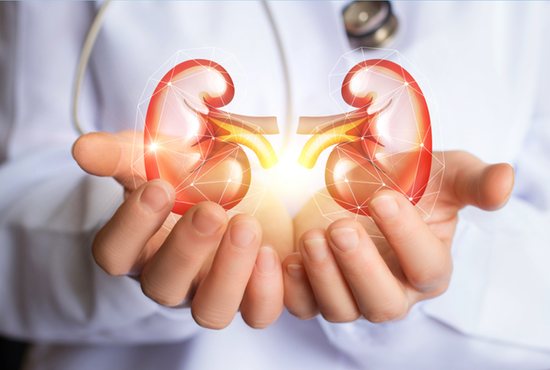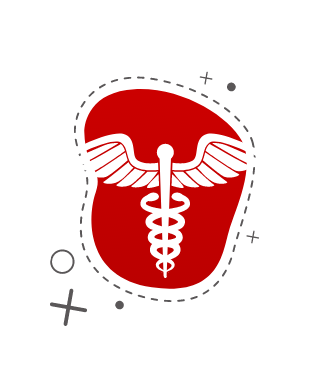Become a Donor
What is a living donation?
Living donation takes place when a living person donates an organ (or part of an organ) for transplantation to another person. The living donor can be a family member, such as a parent, child, brother or sister (living related donation).
Living donation can also come from someone who is emotionally related to the recipient, such as a good friend, spouse or an in-law (living unrelated donation). Thanks to improved medications, a genetic link between the donor and recipient is no longer required to ensure a successful transplant.
In some cases, a living donation may even be from a stranger, which is called anonymous or non-directed donation.


Who can donate a kidney?
To donate a kidney, you must be in good physical and mental health.As a general rule, you should be 18 years or older. You must also have normal kidney function. There are some medical conditions that could prevent you from being a living donor. These include having uncontrolled high blood pressure, diabetes, cancer, HIV, hepatitis, or acute infections. Having a serious mental health condition that requires treatment may also prevent you from being a donor.
Living donation can also come from someone who is emotionally related to the recipient, such as a good friend, spouse or an in-law (living unrelated donation). Thanks to improved medications, a genetic link between the donor and recipient is no longer required to ensure a successful transplant.
In some cases, a living donation may even be from a stranger, which is called anonymous or non-directed donation.
What are the advantages of living donation over deceased donation?
Kidney transplants performed from living donors may have several advantages compared to transplants performed from deceased donors:
- Some living donor transplants are done between family members who are genetically similar. A better genetic match lessens the risk of rejection.
- A kidney from a living donor usually functions immediately, because the kidney is out of the body for a very short time. Some deceased donor kidneys do not function immediately, and as a result, the patient may require dialysis until the kidney starts to function.
- Potential donors can be tested ahead of time to find the donor who is most compatible with the recipient. The transplant can take place at a time convenient for both the donor and recipient.


Are there different types of living donation?
There are two main types of living donation:
Directed donation
This is when the donor names a specific person who will receive the kidney. It is the most common type of living donation. Directed donations are often between blood relatives, like parents, siblings, or children. They can also occur between people with close personal relationships, such as a spouse, friend, or coworker.
Nondirected donation
This is when a person does not name a specific person who will get the kidney. In this case, the donor is matched with someone in need.
What questions should I ask before considering living donation?

My Knowledge
- Why do I want to donate my organ to someone else?
- Do I feel I have received enough education and information to make an informed decision to donate? Do I have any unanswered questions?
- Have I considered all the benefits and risks of donation to myself and my family?
- Have I adequately considered and prepared myself for the risks of surgery?
- Will anyone be upset with me if I do not donate? If so, who?

My Health
- Am I in good physical shape and able to withstand surgery?
- Am I prepared to deal with post-operative pain and discomfort from surgery?
- Is there anything I need to do to improve my physical health and make recovery easier, such as exercising, quitting smoking, or losing weight? Will I need help or support to do this?
- Am I able to manage my recovery period without falling into problems, such as depression, anxiety, nervousness, boredom? Am I prepared emotionally and financially to seek psychological counseling or help if I need it?
- Can I handle a complication that may delay my recovery?

My Emotions
- Have I been honest with myself about why I want to donate an organ?
- Am I expecting anything in return for my donation? (For example, am I hoping for attention, gratitude, a better relationship with the recipient, or other things?) If so, how will I feel if I do not get these things?
- Who can I rely on for practical and emotional support during surgery and recovery?
- How will I feel if the recipient is not grateful in the way I imagined?
- How will I feel if the recipient doesn’t take care of my donated organ after receiving it?
- Will I be able to cope if my relationship with the recipient becomes strained or difficult?
- How will I feel if the organ fails?

My Finances
- How would living donation affect me financially? Would I lose wages during my recovery? Am I able to get paid leave from my employer?
- Have I thought about my other obligations and how I will manage them during my recovery period (such as a demanding job, volunteer commitments, young children)?
- Will I be changing my job or occupations in the near future? If so, how would living donation affect my future employability? Life insurance?
- Have I thought about what might happen if I have any unexpected health complications from the procedure?
- Do I have a plan in place for my dependents if I have an unexpected outcome?
{Cited: Marjorie A. Clay. Education of the donor by the ILDA (Psychosocial Aspects). In: Jennifer Steel, Ed. Living Donor Advocacy: An Evolving Role within Transplantation. New York, NY Springer; 2014: 169-195.}
